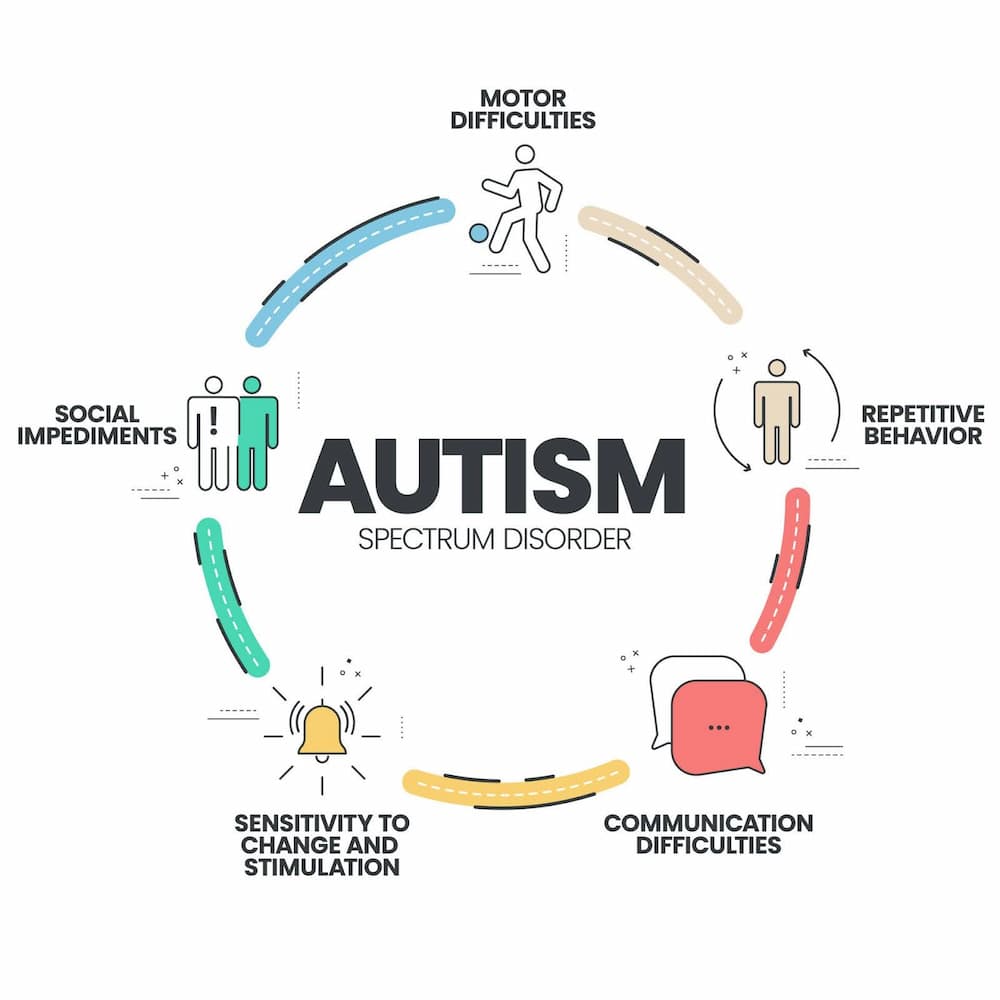The Role of Education And Learning in Sustaining Students with Autism: Ideal Practices
The Role of Education And Learning in Sustaining Students with Autism: Ideal Practices
Blog Article
Discovering Autism: Approaches for Efficient Communication and Interaction
Reliable interaction and interaction with people on the autism spectrum necessitate an extensive understanding of their one-of-a-kind demands and preferences. The intricacies of these strategies disclose further factors to consider that merit expedition, specifically in just how they can be adapted to specific experiences and diverse contexts.
Comprehending Autism Range Condition
Autism Range Disorder (ASD) encompasses a series of neurodevelopmental problems identified by challenges in social communication, communication, and repetitive behaviors. The term "range" mirrors the varied indications and varying levels of severity experienced by people with ASD. While some might show substantial disabilities, others may present high-functioning traits, permitting for higher freedom in every day life.
The start of ASD generally occurs in early youth, with signs frequently identifiable by age two. Very early indications may include delayed speech growth, limited eye get in touch with, and problems in recognizing social hints. Although the accurate etiology of ASD stays unclear, study recommends a combination of hereditary and ecological variables plays a critical function in its advancement.
As an outcome, treatments and assistance customized to specific needs are necessary for fostering communication and social skills. Recognizing the complexity of ASD is important for advertising recognition, acceptance, and effective techniques that help with purposeful interactions with people on the spectrum.

Significance of Clear Communication
Efficient interaction is essential for cultivating understanding and link, especially for individuals with Autism Range Disorder (ASD) Clear communication not only helps with social interactions however additionally enhances the individual's capability to express their thoughts, feelings, and requirements. For people with ASD, the nuances of language can usually be testing; consequently, making use of distinct and uncomplicated language is crucial.
In addition, clear communication helps in reducing irritation and stress and anxiety that might develop from misunderstandings. When messages are conveyed in a direct and constant manner, individuals with ASD are much better outfitted to analyze info accurately, which can substantially improve their social engagement and engagement in different setups.
Establishing routines and making use of aesthetic assistances can better bolster clear interaction. These approaches provide individuals with predictable frameworks that help understanding and retention of details. Furthermore, actively listening and being client during communications advertises a supportive atmosphere where people with ASD feel valued and recognized.
Ultimately, focusing on clear communication not only encourages people with ASD yet additionally promotes even more meaningful connections with their peers, caregivers, and the larger community, leading the method for collaborative partnerships and comprehensive communications. - autism
Non-Verbal Communication Methods
Interaction expands beyond words, and for individuals with Autism Spectrum Disorder (ASD), non-verbal cues play a significant role in interactions. Non-verbal communication methods can consist of facial expressions, motions, body movement, and eye call, every one of which serve as vital parts for conveying intents and feelings.
Understanding and translating these non-verbal signals can boost communications with individuals with ASD. For circumstances, a warm smile or open posture can create an inviting atmosphere, urging engagement. Using visual aids-- such as photo cards or icons-- can link communication spaces and assist communicate messages extra effectively.
It is additionally important to be conscious of individual room, as people with ASD might have different comfort degrees pertaining to closeness. Observing their reactions to physical distance can educate proper adjustments.

Creating Supportive Settings
Creating a supportive setting is critical for fostering favorable communications and enhancing the well-being of individuals with Autism Spectrum Problem (ASD) Such settings can significantly minimize anxiety and create a feeling of safety and security, permitting individuals to share themselves more openly.
To accomplish this, it is vital to think about sensory sensitivities that individuals with ASD might experience. Customizing the physical room to include soft illumination, marginal history noise, and comfy seating can develop a calming ambience. Furthermore, making use of consistent regimens and clear visual schedules can assist people expect shifts and minimize unpredictability, more promoting comfort.
Social rooms should be structured to lessen overwhelming stimuli while giving chances for involvement in preferred tasks. Assisting in locations designated for quiet time can also function as a haven during minutes of stress. Notably, including elements of choice encourages people, permitting them to work out you can try this out firm in their environment.

Encouraging Social Interactions
Fostering social communications among people with Autism Range Disorder (ASD) needs willful approaches that prioritize comfort and interaction. Developing foreseeable routines can help in reducing anxiety, making social settings much more friendly. Developing structured atmospheres with defined roles and duties enables individuals to involve without the overwhelming stress of unstructured social characteristics.
Including rate of interests and strengths into social tasks can work as a catalyst for interaction. Arranging group tasks around shared pastimes or topics of fascination can assist in natural conversations and connections. In addition, utilizing aesthetic supports, such as social manuscripts or pictorial timetables, can assist in understanding social cues and expectations.
Designing suitable social actions is crucial - autism. Peers and grownups should show efficient interaction techniques, including active listening and turn-taking. Role-playing situations can likewise supply a safe area for individuals to exercise these skills
Last but not least, promoting peer relationships through inclusive practices is essential. Encouraging inclusive playdates or team outings can develop possibilities for socializing in a comfy setup. By carrying out these caregivers, educators and methods can significantly improve social interactions for individuals with ASD, promoting their total social development and wellness.
Final Thought
In final thought, reliable communication and communication techniques are crucial for supporting people with Autism Spectrum Problem. Emphasizing clear language, including non-verbal cues, and establishing foreseeable routines significantly improve interaction and reduce stress and anxiety. Producing encouraging settings cultivates safe social communications, while encouraging shared interests facilitates significant connections. Inevitably, these approaches encourage people with autism to navigate social landscapes, advertising their total health and enabling the development of long lasting connections.
Effective interaction and interaction Visit Website with individuals on the autism range necessitate a comprehensive understanding of their distinct requirements and preferences. Clear communication not just assists in social communications but also boosts the person's capability to express their feelings, thoughts, and needs.Promoting social communications among people with Autism Spectrum Disorder (ASD) calls for willful techniques that prioritize convenience and involvement. By carrying out these educators, methods and caretakers can significantly improve social communications for individuals with ASD, promoting their general social development and right here wellness.
In conclusion, effective interaction and communication approaches are necessary for supporting people with Autism Spectrum Disorder.
Report this page